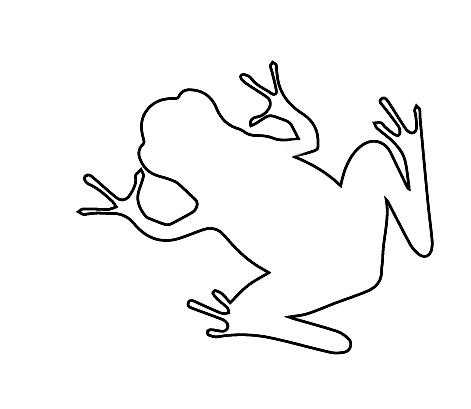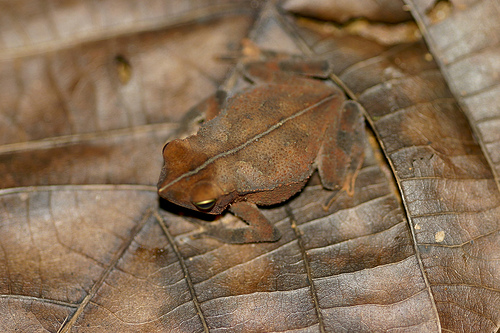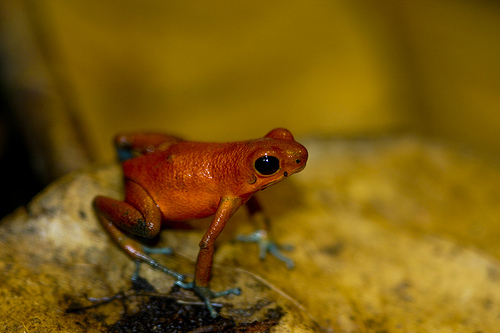For students aged 5-10
General Objective: Students learn about strategies that animals have evolved to survive
Specific Objective: Students learn strategies that frogs use to avoid predation
Introduction: Discuss the different strategies that frogs use to avoid predation.
Such as:
- Camouflage(Concealment): Blending in with the color/texture of an environment. Example: South American Common Toad Rhinella alata
- Mimicry: Imitating a more threatening animal. Example: Columbian Four-Eyed Frog Pleurodema brachyops
- Aposematism: Being a bright color to advertise that you are poisonous or otherwise unpalatable to predators. Example: Strawberry Poison Dart Frog Oophaga pumilio
Ask the students to hypothesize which strategy will be the most successful.
Materials: Paper outlines of frogs, crayons ,markers, or colored pencils, scissors, paper, glue or clear tape
Procedure:
1. Print and pass out frog outlines.
 2. Give students a few minutes to survey the room for good “hiding” spots. Advise the students that they must choose spots to hide their frogs in plain sight.
2. Give students a few minutes to survey the room for good “hiding” spots. Advise the students that they must choose spots to hide their frogs in plain sight.
3. Tell them to decorate their frogs using one of the strategies they learned
4. Once frogs are decorated turn half of the class into “snakes”. Send them out of the room while the frogs are taped around the room, hidden in plain sight.
5. Allow snakes to come back and “hunt” frogs for 1 minute. Remind them that bright colored frogs are likely poisonous. Repeat with the other half of the class.
6. Collect the frogs that remain “uneaten” around the room. Discuss with the students which strategies were most successful, and why they think that was true. Was their hypothesis true or false?
7. Ask to students to write about the technique that they chose and reflect on the pros and cons of this type of defense strategy. They could also graph their results on a simple bar graph something like this:




